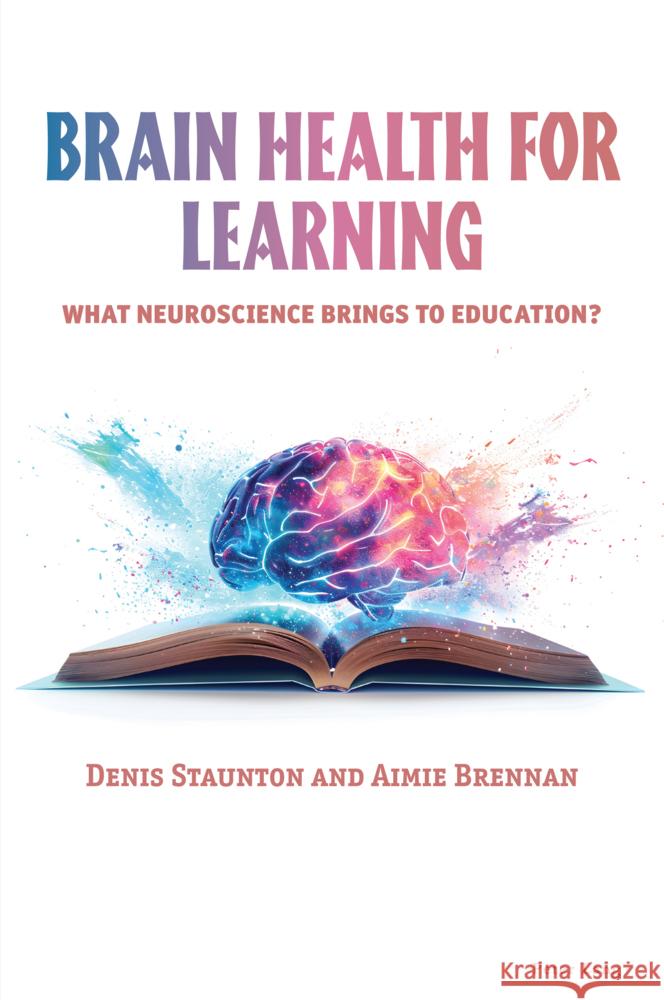Brain Health for Learning » książka
Brain Health for Learning
ISBN-13: 9781803741055 / Angielski / Miękka / 2024 / 284 str.
«In this beautifully-written book, the authors skip across the many bridges that connect neuroscience to education, creating a wonderful resource for educators. They consider all the elements that an understanding of neuroscience can bring to education in a highly accessible manner, focusing on emotions and spiritual meaning as well as more traditional topics like learning and memory. They have produced a tour de force.»(Usha Goswami, Director for the Centre for Neuroscience in Education, Professor of Cognitive Developmental Neuroscience and a Fellow of St. John's College, University of Cambridge)«This book is singular and a vital service to health, education and labor thinkers, doers and investors. Increased brain capital, which encompasses brain health and brain skills, is vital to educational attainment, upskilling and reskilling. In this book, Staunton and Brennan provide a detailed roadmap for the vital importance of neuroscience to fuel improved education. This area has been oft neglected, but no more.»(Harris A. Eyre MD PhD, Lead and Senior Fellow, Neuro-Policy Program, Rice University , USA)«This is a hugely useful and insightful text, written in a format which makes a challenging area of discourse accessible. Neuroscience is now the dominant science in education, and it is important to ensure that the synergy between the disciplines is well-founded and robust. This book contributes positively to unravelling the many areas of intersection between neuroscience and education in a rigorous manner.»(William H Kitchen, Senior Lecturer Stranmillis University College)This book is an original contribution to the field of educational neuroscience. The authors argue that all adults should pay more attention and become more reflective of their experiences so that they can learn more deliberately and in a focused way. The book addresses the functioning of the brain, the architecture of the brain, neuroplasticity, learning processes and how to develop and maintain a healthy brain throughout life. Learning to learn is about individuals understanding how they learn and thus developing their capacity to learn by harnessing lessons from neuroscience.The book will be useful for learners who are transitioning or returning to education, those training to work with children and young people, and those interested in understanding more about their own learning.
The first section of the book provides a foundation to the biology of the brain and the historical development of modern neuroscience as a discipline. The section provides the reader with a context for understanding the functions and architecture of the brain and how it contributes to learning.











